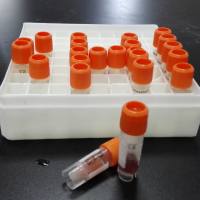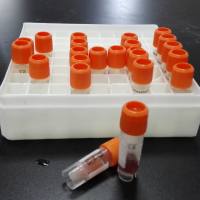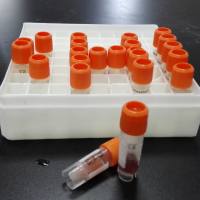Lectins as Tools for the Purification of Liver Endothelial Cells
互联网
571
Successful procedures for the isolation and culture of large-vessel endothelial cells (EC), were first reported in the early
seventies (1
,2
). Since then, microvascular EC have been isolated from various organs, such as adrenal gland (3
), brain (4
), skin (5
), retina (6
), and myocardium (7
). The initial steps of the conventional methods for EC isolation involve mechanical and/or enzymatic dissociation of the
tissues, followed by filtration and pelleting of cells. A number of special techniques have been developed to eliminate contaminating
cell types and enrich endothelial cells in mixed cell populations. These include: manual removal of nonendothelial cell types;
use of selective media; plating cells on gelatin or fibronectin-coated dishes, and Percoll gradient centrifugation (8
,9
). The main problem with the conventional methods is that they are labor intensive and often do not produce pure EC populations.
A more advanced approach is to use fluorescent-activated cell sorting (FACS) which allows sorting based on specific surface
antigens or metabolic differences. Auerbach et al. used FACS for EC isolation, using an antibody against angiotensin converting
enzyme (10
). Later, Voyta et al. sorted EC, based on their uptake of acetylated low-density lipoprotein (11
). Cell separation techniques using magnetic affinity are based on similar principles as the FACS, but do not involve expensive
equipment. In this chapter, we describe liver endothelial cell isolation, using lectin-coated magnetic beads (12
).









